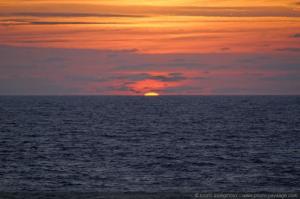As pretty much everyone knows, we have a dog, the best and most precious gift we have ever received. Oliver is an English Cocker Spaniel from a distinguished family (his dad was the top sire in the country for several years running) and he looks just like his mom, Abby. He is five years old, extremely intelligent (we sometimes have to spell out words in his presence), with a playful sense of humor. When he was just a puppy he ate something toxic and we almost lost him to liver failure but an indomitable spirit and good doctoring pulled him through. He is a dog who always seems to rise to the occasion and moving to Panama was, indeed, an occasion. The first month while we were living in Panama City, Oliver was under “house quarantine” and, coupled with our mutual adjustment to the heat, we spent a lot of time indoors interspersed with short walks through the neighborhood park. And then we moved to the mountains. After several months here of perfect health, in late August Oliver contracted tick fever, a potentially fatal disease and one to which North American dogs are particularly vulnerable since they have little or no immunity; apparently some Panamanian dogs are able to brush it off like a bad cold. Although tick fever affects the liver, it was particularly hard on Oliver because of the insult his liver had suffered when he was a puppy. We are very fortunate to have found a veterinarian who speaks English, considered to be the best in Panama, who has an animal hospital in Panama City and three separate clinics, one of which is located in nearby Coronardo where he is in residence three mornings a week. We took Oliver down the mountain immediately and he ended up being hospitalized for ten anxiety-filled days in Panama City (hospitalization cost $12/day). We are happy and relieved to report he has made a full and complete recovery, all of his blood work is back in the normal range and he appears to have forgotten the whole sorry business.
Spaniels are bird dogs originally bred to flush small game, like quail, pheasant, and rabbit within gun range. Possessing a keen sense of smell and sight, Cockers were specifically bred to flush the Eurasian Woodcock; hence the name “cocker.” True to his nature, Oliver has always found pleasure in chasing birds: sea gulls at the edge of the San Francisco Bay, sandpipers at the surf line of Stinson Beach, and the occasional robin or blue jay on our daily walks around Belvedere Island. It seemed a harmless enough diversion since he’s not the fastest runner so no bird was ever in actual jeopardy. But now he’s in Panama. In the rural mountains of Panama chickens run about freely, seemingly belonging to no one and yet, upon closer observation, able to find their way back to their respective homes at mealtime. They cross the road with abandon, come into the yard without permission, and generally make their presence known. The mountains are also host to a variety of geese which many people keep as pets and they too roam around in unfenced yards but clearly belonging to one house or another. I call them “guard geese” because they make quite a ruckus when strangers approach. Panamanian dogs do not chase birds, chickens or geese for to do so would put their lives in peril.
The day we moved into our new house Oliver jumped out of the car and chased a chicken over the fence. Yes, we have chickens as next-door neighbors; roosters too who herald the dawn of every morning. Although Oliver is quite capable of walking off leash (he runs ahead but always stops to let me catch up) I soon learned that it was a bad idea in our immediate neighborhood for if he saw a chicken, the chase was on — and chickens are not the fastest runners, especially the chicks. And one day early on he chased a group of geese. So whenever we walk in our neighborhood outside of our fenced and gated yard, he is on leash. Now the plot thickens. There’s a rooster next door, a black and white fellow with a red comb, who has decided to entertain himself by taunting Oliver. He sits on the fence dividing the two properties and crows until he gets Oliver’s attention. Then he jumps down — not onto his own yard but onto ours — and the chase is on. When Oliver gets too close, the guy flies across the fence and is seemingly gone — until he perches once again on the fence to start the game over again. It’s quite the scene to witness although the last time we were in the yard Oliver declined to take the bait. He might just be tired but it’s my guess he has figured out he is being used. See, I told you he was smart.



